Schrödinger's Cat
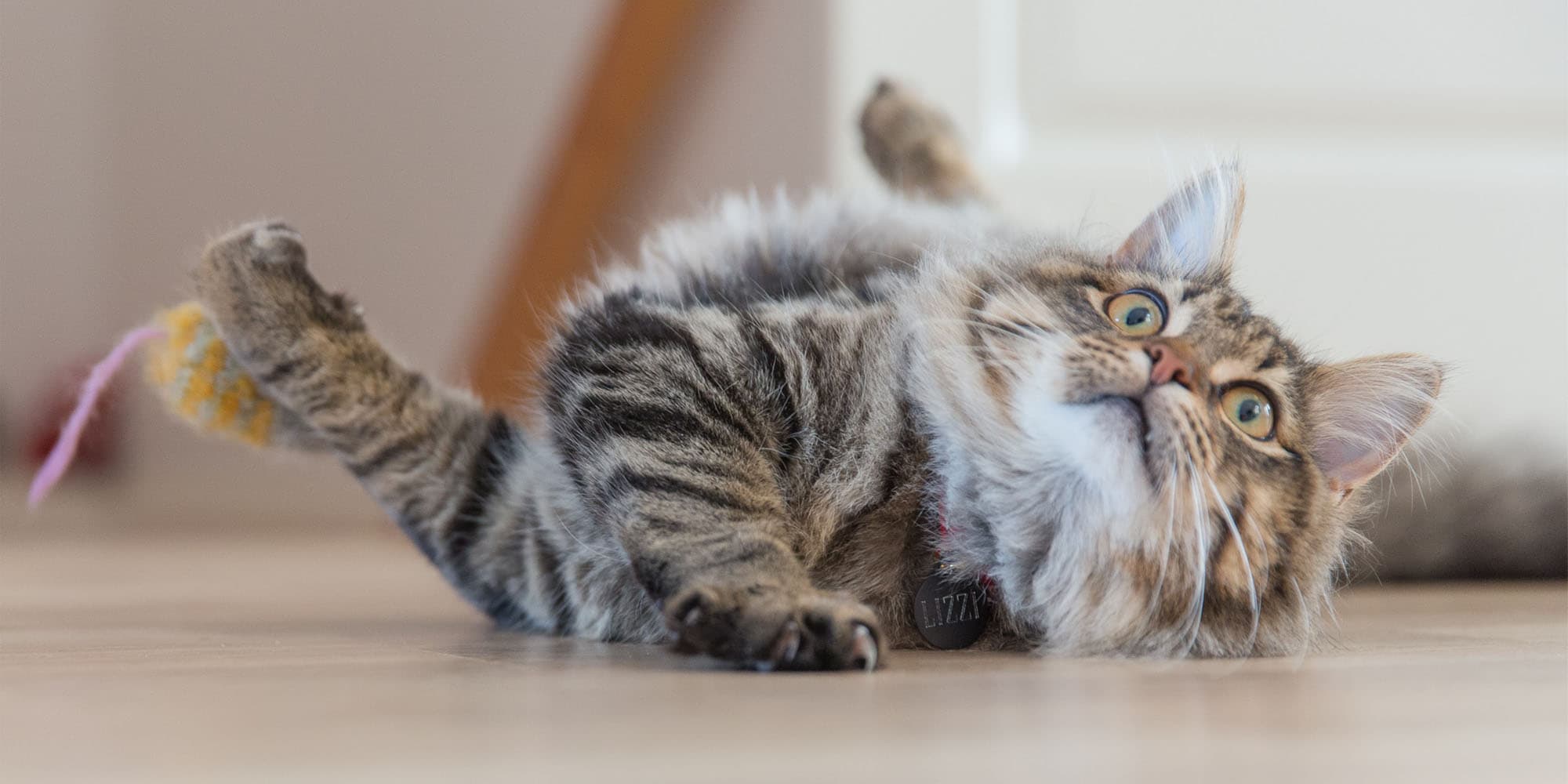
Who is Schrödinger's Cat?
A cat that is both dead and alive, at the same time!
It sits in a sealed box, waiting for someone to open it and determine whether its alive or dead.
Of course, this is a hypothetical cat sitting in a hypothetical box, for a thought experiment, designed by Erwin Schrödinger in 1935.
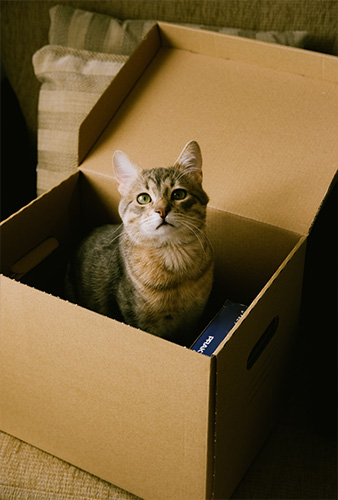 Cat in a box - Image by Beyzaa Yurtkuran
Cat in a box - Image by Beyzaa Yurtkuran
What’s in the box?
Inside this box, there's a cat, a radioactive atom, a Geiger counter, a vial of poison, and a hammer.
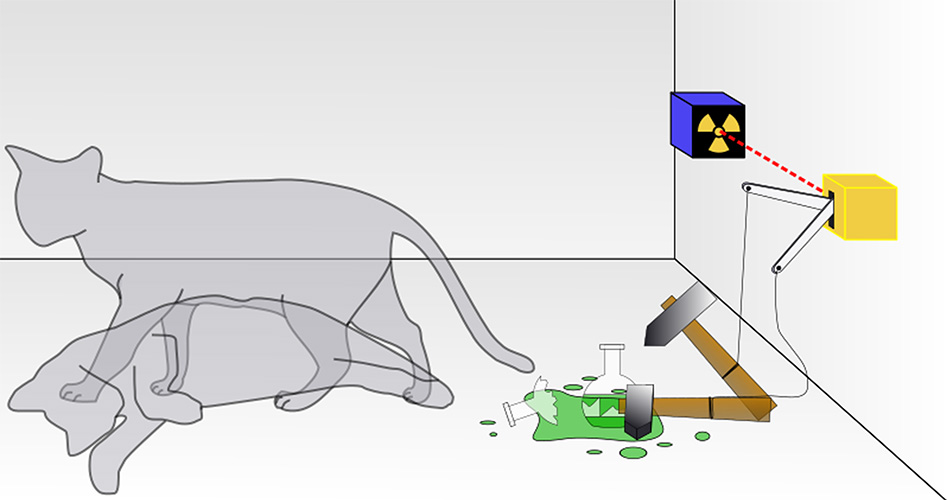 Diagram of Schrödinger's cat thought experiment - Image from Wikimedia Commons
Diagram of Schrödinger's cat thought experiment - Image from Wikimedia Commons
How is this experiment done?
If the radioactive atom decays, the Geiger counter would detect radiation, which would release the hammer, which would in turn break the vial of poison, killing the cat.
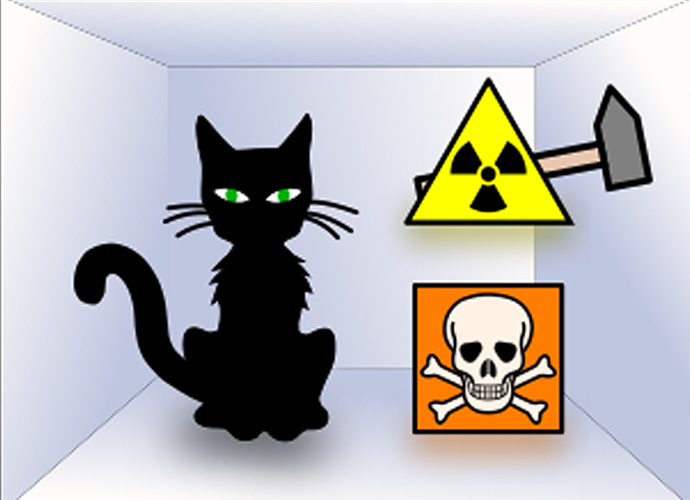 Symbolic setup of Schrödinger's cat experiment - Image from Wikimedia Commons
Symbolic setup of Schrödinger's cat experiment - Image from Wikimedia Commons
But if the Geiger counter does not detect radiation (the radioactive atom has not decayed), the hammer is not released, the vial of poison remains intact, and the cat is alive inside the sealed box.
Why use these specific “tools”?
The choice of these specific "tools" for this thought experiment was deliberate.
- Cat: The cat is a macroscopic entity whose fate is directly tied to a quantum event (the decay or non-decay of the radioactive atom).
Using a cat, makes the results more evident and thought-provoking.
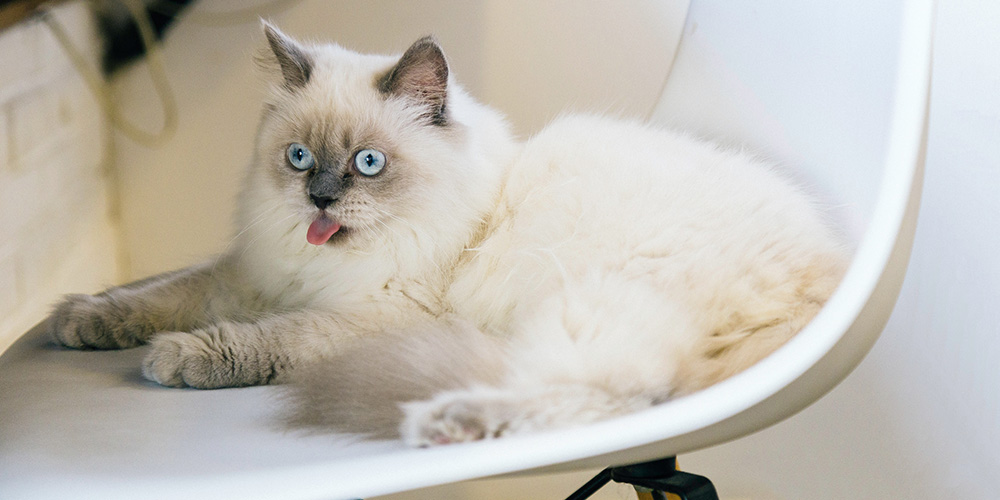 White Cat - Image from Tranmautritam
White Cat - Image from Tranmautritam
- Radioactive Atom: A radioactive atom was chosen because its decay is a fundamentally quantum event with a probabilistic outcome.
Probabilistic outcome?
Each outcome (decay or non-decay) is possible, and both are mutually exclusive (if one occurs, the other doesn’t).
What is the probability of each outcome?
The exact moment when a particular atom will decay is inherently unpredictable, but for a large collection of atoms, the average rate of decay can be described by the half-life.
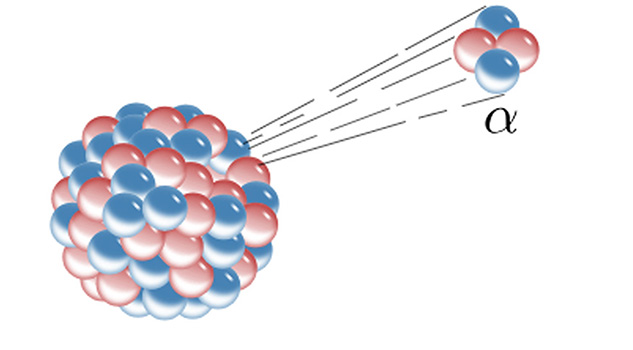 Radioactive atom decay - Image from Wikimedia Commons
Radioactive atom decay - Image from Wikimedia Commons
Half-life?
The half-life is the time it takes for half of a sample of a radioactive substance to decay.
This means that if a radioactive material has a half-life of 10 years, then after 10 years, only half of the original material remains undecayed.
So, in the box, there's a 50% chance the radioactive atom will decay within a given time frame (corresponding to its half-life) and a 50% chance it will not.
- Geiger Counter: This instrument was used to detect radiation.
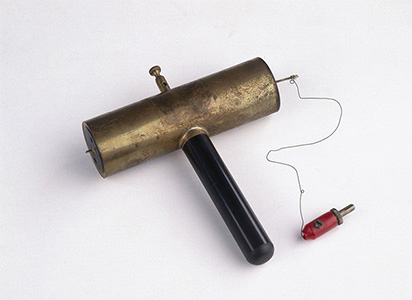 Early Geiger counter, made by Hans Geiger, 1932 - Image by Wikimedia Commons
Early Geiger counter, made by Hans Geiger, 1932 - Image by Wikimedia Commons
If the Geiger counter detects radiation (indicating that the radioactive atom has decayed), it activates a mechanism that releases the hammer.
If not, the hammer is not released.
- Hammer: The hammer was used to set the events in motion upon the detection of the radioactive decay.
 Hammer - Image by Wikimedia Commons
Hammer - Image by Wikimedia Commons
If radiation is detected by the Geiger counter, the hammer is “triggered” and breaks the vial of poison.
If no radiation is detected, the hammer is not “triggered”, and the vial of poison never breaks.
The experiment does not seem to explain how exactly the hammer is “triggered”, but I guess this is irrelevant for this experiment.
- Vial of poison: The poison connects the quantum world to the macroscopic world.
 Poison - Image by vectorpocket
Poison - Image by vectorpocket
If the vial is broken by the hammer, the poison is released, and the cat is dead.
If not broken, the cat is alive!
What’s the point of this experiment?
This thought experiment was suggested by Schrödinger, to challenge the implications of the Copenhagen interpretation of quantum mechanics.
Copenhagen interpretation?
This is one of the foundational concepts in quantum mechanics.
It explains that a quantum particle exists in all possible states simultaneously. So, not in one state or the other, but in all states at the same time!
This is called a superposition and the quantum particle remains in such superposition, until it is observed or measured.
Once observed, the system collapses into one of the possible definite states.
So, the observation or measurement "determines" the reality of that system.
Copenhagen interpretation - Image from World Science
This means that the radioactive atom of Schrödinger’s cat experiment exists in both positions (decay and non-decay state) simultaneously.
And it remains in this superposition until observed, after which it collapses into one of the possible states (decay or non-decay).
How did the experiment challenge the interpretation?
Schrödinger’s cat thought experiment showed that by applying the Copenhagen interpretation in his scenario, the cat is at both states simultaneously.
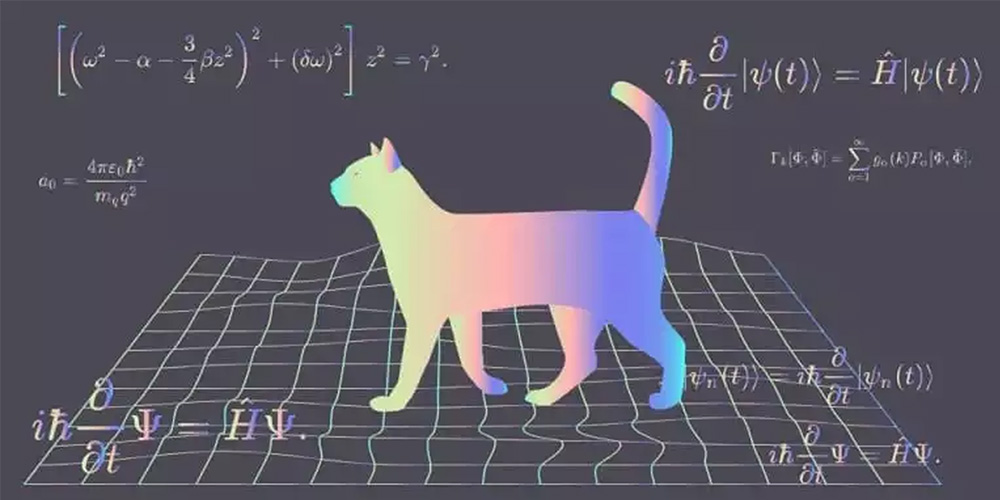 Copenhagen Interpretation of Quantum Mechanics
Copenhagen Interpretation of Quantum Mechanics
So, the cat is both dead and alive at the same time!
Since the atom is simultaneously in both states (decay and non-decay) until observed, and since the cat’s life depends on whether the atom decays or not:
the cat is both, dead and alive, until observed!
Of course, if someone would open the box, they would never see a cat that is both dead and alive. They will always see a cat that’s either dead or alive.
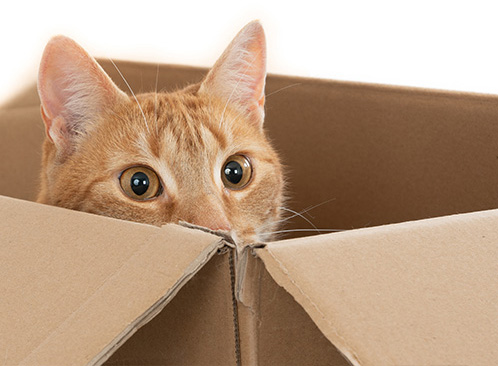 Cat in a box - Image by wirestock on Freepik
Cat in a box - Image by wirestock on Freepik
With his experiment, Schrödinger wanted to show the counterintuitive quantum behaviour, when applied to real-world macroscopic scenarios.
He used this scenario to illustrate the absurdity (in his view) of the prevailing quantum interpretation.
So, is the cat dead or alive?
Who knows?
I guess we’ll have to wait to open the box and find out!
Of course, I can’t imagine a cat that's both alive and dead until someone decides to look inside the box.
But I can imagine quantum entities and systems behaving in ways we don’t understand for reasons we don’t understand.
Is Copenhagen interpretation the only interpretation?
Of course not!
While the Copenhagen interpretation is widely accepted, some critics argue that it’s subjective because it doesn't provide a clear definition of what constitutes a "measurement" or an "observer."
There are several other interpretations of quantum mechanics.
Some are less “open-minded” than others, but all are possible!
- Many-Worlds Interpretation (MWI): This suggests that every time a quantum event has multiple possible outcomes, all of them occur!
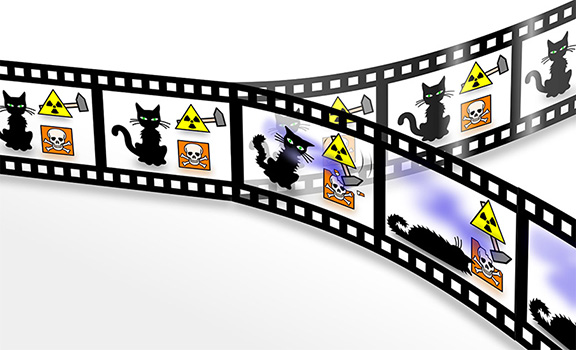 Many worlds interpretation - Image by Wikimedia Commons
Many worlds interpretation - Image by Wikimedia Commons
Here, there's no wave function collapse as proposed in the Copenhagen interpretation.
Instead, every possible quantum event outcome exists in its own separate universe.
Quite open-minded indeed!
This means that for every quantum event, the universe "splits" into multiple parallel universes.
And this is actually consistent with existing mathematics of quantum mechanics.
So, in the Schrödinger's cat experiment, there's a universe where the cat is alive and another where it's dead.
Imagine that!
- Pilot Wave Theory: This theory suggest that particles always have definite positions and are never truly "in superposition" like in the Copenhagen interpretation.
Instead, they're guided by a "pilot wave" that influences their trajectories.
In the Schrödinger's cat scenario, the cat would have a predetermined state (either alive or dead) guided by a "pilot wave" but, due to our lack of knowledge, we can't predict which one it will be, until we observe.
- Objective Collapse Models: Here, it is suggested that the wave function collapse is a real, physical process, not just an update of our knowledge.
The collapse is objective and spontaneous, happening with a certain probability over time.
Its not triggered by observation, and its not deterministic as in the Copenhagen interpretation and the Pilot Wave Theory.
I would call this the “It is what it is Model”. It just is.
For Schrödinger's cat, the wave function would spontaneously and objectively collapse over time, determining the cat's fate (alive or dead) without the need for observation.
- Simulation Theory: This is a philosophical and speculative idea that suggests that our reality is not "real" in the sense we typically understand it.
Rather, it’s a computer-generated simulation or virtual reality.
This is so fascinating! Could this be true?
Could we be living in a simulation theory, where the cat's state (alive or dead) is determined by the programming or algorithms of the simulation, and our observation is merely accessing that information?
Mind-blowing!
Or, in this case, I should say “virtual mind-blowing”?
I definitely want to understand more about this!
Why is Schrödinger's Cat experiment important?
Schrödinger introduced this thought experiment as a critique of the Copenhagen interpretation and its concept of superposition.
But over time, it became clear that this cat-in-a-box scenario was more than just a simple critique.
It sparked deeper conversations, challenged established views, and became a central reference point in the broader conversation on quantum phenomena.
The cat, whether alive or dead, certainly made its mark on the world of physics!
